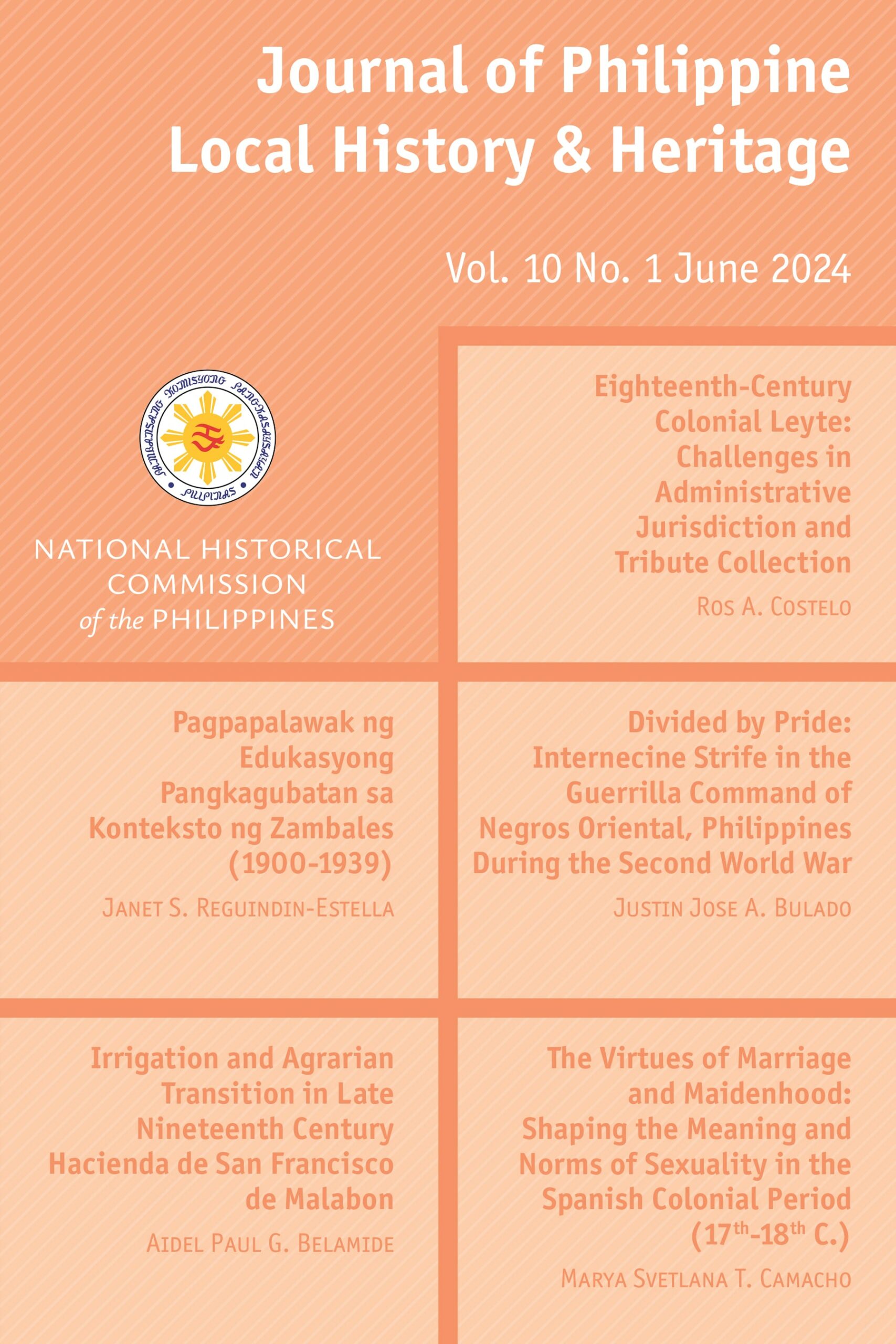Eighteenth-Century Colonial Leyte: Challenges in Administrative Jurisdiction and Tribute Collection
Journal on Philippine Local History and Heritage
Prior to 1746, Samar and Leyte, along with the smaller islands of Biliran and Maripipi, were governed as a single political entity. However, in 1747, Samar and Leyte were officially separated into two distinct provinces, each with its own capital and provincial governor (alcalde mayor). However, just six years later, in 1753, authorities decided to revoke the partition. Throughout the latter half of the eighteenth century, the decisions made by the authorities, both in the Philippines and Spain, regarding the division or reunification of the two islands were continuously influenced by an interplay of political, economic, and religious forces.
This paper delves into the political and social history of Leyte during the latter half of the eighteenth century. It is structured into two primary sections. The first part explores the origins of Leyte and Samar as separate provinces in the mid-1700s and sheds light on the reasons behind the fluctuating territorial status of these islands until their final division at the end of the century. The second part documents the resistance of the local population to tribute payments in Leyte during the mid-century, a problem perceived by colonial authorities as stemming from the administrative reconfiguration. The colonial government viewed this unrest as a compelling reason to revert to the previous administrative arrangement for Leyte and Samar as one political jurisdiction. Drawing upon underutilized archival sources from the Archivo General de Indias (AGI), this paper aims to enrich the understanding of Leyte´s local history by utilizing eighteenth-century primary sources. Particularly noteworthy are the previously unused archival documents written in the local language, Bisaya Samar-Leyte/Waray.
This paper delves into the political and social history of Leyte during the latter half of the eighteenth century. It is structured into two primary sections. The first part explores the origins of Leyte and Samar as separate provinces in the mid-1700s and sheds light on the reasons behind the fluctuating territorial status of these islands until their final division at the end of the century. The second part documents the resistance of the local population to tribute payments in Leyte during the mid-century, a problem perceived by colonial authorities as stemming from the administrative reconfiguration. The colonial government viewed this unrest as a compelling reason to revert to the previous administrative arrangement for Leyte and Samar as one political jurisdiction. Drawing upon underutilized archival sources from the Archivo General de Indias (AGI), this paper aims to enrich the understanding of Leyte´s local history by utilizing eighteenth-century primary sources. Particularly noteworthy are the previously unused archival documents written in the local language, Bisaya Samar-Leyte/Waray.
Keywords
Leyte
eighteenth-century Leyte
colonial administrative jurisdiction
tribute
indigenous resistance
division of province
Faculty Involved:

Ros A. Costelo, Ph.D.
Associate Professor (On Leave)
Focus: history of Spanish colonial public works in the Philippines, history of Spanish colonial engineering, history of urbanization and local history of Leyte.



